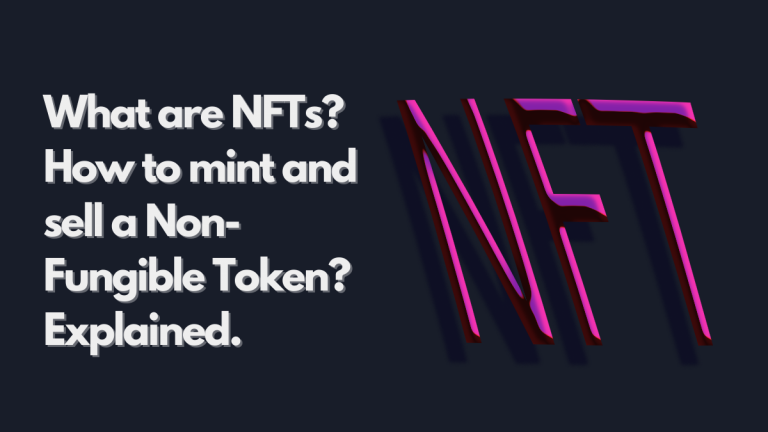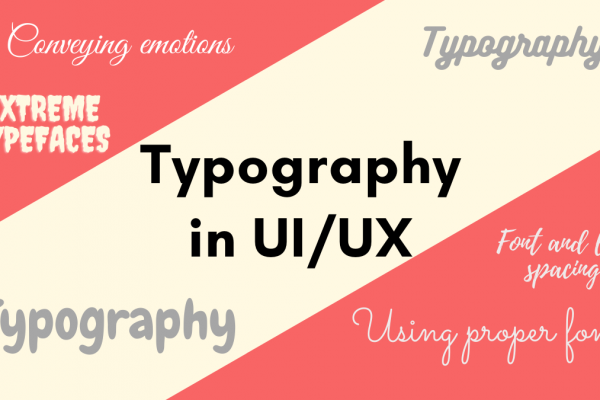NFTs are the latest must-have in the world of crypto. Estimates suggest that crypto art sales have generated close to $2.5 billion so far in 2021. If you follow tech or art news you must have heard of people buying artworks for what looks like ridiculous prices. Even internet memes and stickers are being sold for thousands of dollars.
Confused? You’re not the only one. Everyone everywhere is talking about NFTs, and there are tons of articles on them. But someone telling you that NFTs are Non-Fungible Tokens doesn’t help you understand it.
While we may never be able to understand the allure of NFTs, or why people pay such high prices, we sure can try to understand what they are and how they work.
What are NFTs?
NFTs are non-fungible tokens. What this means is that one is not like the other. A coin, crypto or otherwise is fungible. They represent the same thing, and you can exchange one for the other. But NFTs are not the same. One is not the same as the other.
These tokens are used to represent ownership of a digital asset. How does it work? The same way you own a bitcoin. NFTs are represented on a blockchain. If you’re not sure how a blockchain works, read this article. Essentially, blockchain is a ledger that keeps track of all the transactions on the blockchain network. If you’ve sold an NFT to someone, the blockchain will record that. And if that was sold again to someone else, the entire transaction history is recorded here. Due to the nature of blockchain technology, you can’t sell the same thing twice.
For example, Imagine you made a digital portrait and someone paid $100 for it. Then you send over a PNG file of your artwork to the person who paid you. There’s no assurance that you won’t sell the same artwork to someone else. This is what an NFT prevents. Kind of. (read the next few sections).
The creator of the blockchain (and bitcoin) was trying to solve this exact problem, called double-spending. If a currency is digital, what’s stopping you from giving it to someone else while keeping a copy of the same? Or giving it to someone else?
When you add your artwork to a blockchain, anyone can track every time the ownership changes.
What can be made into an NFT?
NFTs could be just about any digital asset, from videos, gifs, and animations to plots in a video game(yes plots of land in a game). While NFTs are associated with digital assets, there’s nothing stopping anyone from pairing a digital asset with a physical asset. For example, in December 2019, Nike got a patent for ‘cryptokicks.’
Every time someone buys a pair of these sneakers, they’ll get an NFT with this. They can store this in a digital wallet, and it will confirm the ownership of a pair of authentic sneakers. If they sell or give the physical sneakers, they can give the sneakers alone or with the associated NFT, though I imagine someone buying them would want the NFT as well. The story doesn’t end here though. The patent also includes allowing “breeding” two of these NFT tokens to create “offspring” tokens which could then be made into physical sneakers.
Yes, I know. NFTs are weird.
NFTs show ownership, not copyright.
Yes. Buying an NFT generally only means that you own that specific digital asset. In some way, you could say that you only own that specific copy of the digital asset. If it’s a picture, you could use it as your profile picture, but it doesn’t mean that someone else can’t take a screenshot and use it for themselves. It doesn’t mean that the artist that made the original artwork can’t make a copy and make an NFT out of it, as the copyright belongs to the artist.
In fact, some NFTs are not unique, as digital assets look or feel the same. For example, during the auction of her NFT artworks, Grimes sold thousands of NFTs of two of her works titled “Earth” and “Mars.” But the NFTs themselves are unique, in the sense that they’re individual NFTs. I suppose this is where we enter the realm of philosophy, is the copy of an object the same as the original object, or are they different objects? Ship of Theseus? Not sure.
Confused?
Picture this, even if you own the Mona Lisa, someone else can take a picture of the Mona Lisa and sell that. Da Vinci can make a copy of the same thing and sell it to someone else. Someone can scan it or make an exact copy and sell it. Sure it will be a copy, but they can, as long as they don’t claim it as the original. But when its a digital copy, the copy will be made of the exact same elements as the original. So yes. Ship of Theseus.
So how do you make an NFT?
There are plenty of places where you can make an NFT. Since the easiest one appears to be OpenSea, let’s go with it. OpenSea is the largest NFT marketplace for buying and selling cryptokitties, in-game items, or just about any form of NFTs. An important thing to note is that you can only sell NFTs on the blockchains supported by the marketplace. So if your NFT is based on Ethereum, you can sell or buy them only on a marketplace that supports Ethereum.
Once you open OpenSea, click “Create”. Here you’ll the website will ask you to link your Ethereum wallet.
If you, like me, don’t already have a crypto wallet, they recommend MetaMask. You can create some other wallet and link it here as well.
Setting up Metamask is fairly straightforward: download the chrome extension from the website, set up the password and the secret recovery phrase, and you’re good to go.
Once you set up your MetaMask wallet, things may go a bit weird (it did for me). For some reason, I couldn’t link my wallet to OpenSea. If this happens, head back to the OpenSea homepage, and click “Create” there. MetaMask popup will come asking your permission to link the two, just go for it. Now OpenSea will take you to a page where you can upload the file you want to make an NFT out of.
As you can see, you can add just about any file, as long as they’re less than 40MB in size. I used this image.
As you can see in the below image, add an external link (if you want) with more information about the NFT, give it a name, and a description. You can also add properties, levels, and stats to them. These are useful when you are creating, let’s say a team of superheroes with different character traits, etc. Obviously, that doesn’t apply to my specific use case.
Now you can create an NFT on the Ethereum blockchain or on Polygon. For selling an NFT on Ethereum, you have to pay something called “gas” or Ethereum Gas. For the purpose of this article, this is just the commission that the OpenSea charges for adding an NFT to the marketplace. Polygon doesn’t have gas fees. I wasn’t fully aware of this situation, so I created one on Ethereum, and went back to create another one on Polygon. Here’s my Ethereum NFT.
And, uhh, yeah, made an NFT? I guess?
How to sell an NFT?
To sell the NFT, go to your collections (click on the profile icon on the top right-hand corner- collections).
Click on your NFT
And hit sell.
As you can see, you can sell it for a fixed price or auction it for the highest bidder, or in whatever manner you like. And the platform will take a fee at the point of sale as shown. Once set up, click on “Post your listing.” This is for an Ethereum NFT.
At this point, if you’re using an Ethereum blockchain, you’ll need to pay the gas fees.
If, like me, you went for Polygon when you click ‘Sell’ you’ll see this.
As you can see, unlike the Ethereum NFT, you can’t auction this off. Do note that this is specific for this marketplace, there may be other marketplaces where you can auction off Polygon NFTs as well.
Once you click “Complete Listing”, you’ll see a message like this.
Just go through the steps as shown. If you’re using MetaMask, they’ll ask you to show one transaction to unlock the currency, the popup will come up, but you don’t actually have to make the payment. Just decline the transaction, and move forward with signing the message, and yeah you’re good to go.
The process is fairly simple, I got it within two tries.
Royalties
This is an interesting aspect of selling NFTs. You can set up the NFTs so that every time someone resells your NFT, you get a percentage of the price. In the case of OpenSea, you can set the royalty percentage for an entire collection. For this head to your collections, click on the three dots next to your collection, and click “Edit”
Here you can add separate logos as well as change other details for your collection. Scroll to the very bottom of this section, and edit the percentage.
The NFTs I made
Here’s the collection of NFTs I made
These two are Polygon NFTs
And this is the Ethereum NFT I made.




